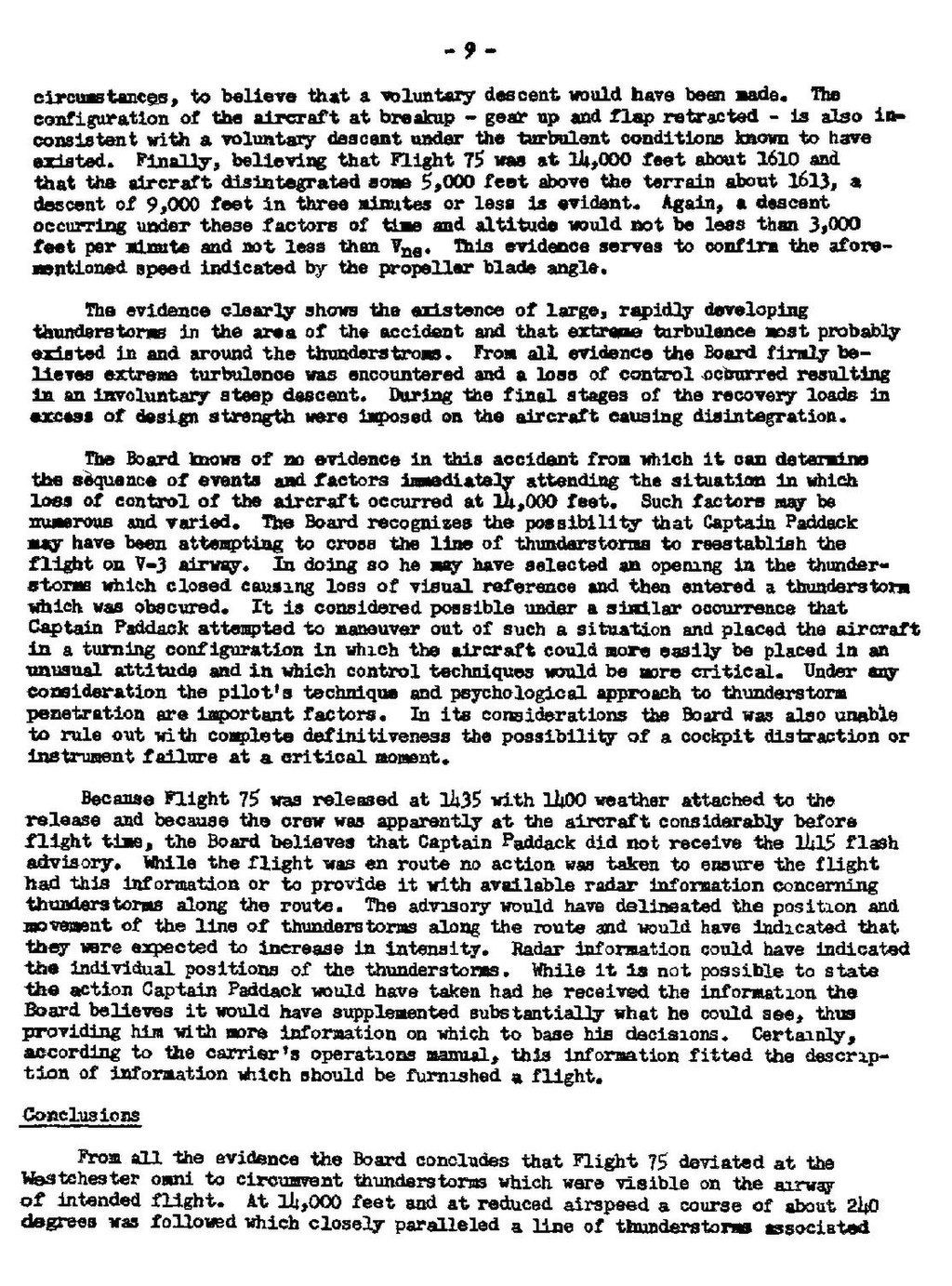- 9 -
circumstances, to believe that a voluntary descent would have been made. The configuration of the aircraft at breakup - gear up and flap retracted - is also inconsistent with a voluntary descent under the turbulent conditions known to have existed. Finally, believing that Flight 75 was at 14,000 feet about 1610 and that the aircraft disintegrated some 5,000 feet above the terrain about 1613, a descent of 9,000 feet in three minutes or less is evident. Again, a descent occurring under these factors of time and altitude would not be less than 3,000 feet per minute and not less than Vne. This evidence servers to confirm the aforementioned speed indicated by the propeller blade angle.
The evidence clearly shows the existence of large, rapidly developing thunderstorms in the area of the accident and that extreme turbulence most probably existed in and around the thunderstorms. From all evidence the Board firmly believes extreme turbulence was encountered and a loss of control occurred resulting in a involuntary steep descent. During the final stages of the recovery loads in excess of design strength were imposed on the aircraft causing disintegration.
The Board knows of no evidence in this accident from which it can determine the sequence of events and factors immediately attending the situation in which loss of control of the aircraft occurred at 14,000 feet. Such factors may be numerous and varied. The Board recognizes the possibility that Captain Paddack may have been attempting to cross the line of thunderstorms to reestablish the flight on V-3 airway. In doing so he may have selected an opening in the thunderstorms which closed causing loss of visual reference and then entered a thunderstorm which was obscured. It is considered possible under a similar occurrence that Captain Paddack attempted to maneuver out of such a situation and placed the aircraft in a turning configuration in which the aircraft could more easily be placed in an unusual attitude and in which control techniques would be more critical. Under any penetration are important factors. In its considerations the Board was also unable to rule out with complete definitiveness the possibility of a cockpit distraction or instrument failure at a critical moment.
Because Flight 75 was released at 1435 with 1400 weather attached to the release and because the crew was apparently at the aircraft considerably before flight time, the Board believes that Captain Paddack did not receive the 1415 flash advisory. While the flight was en route no action was taken to ensure the flight had this information or to provide it with available radar information concerning thunderstorms along the route. The advisory would have delineated the position and movement of the line of thunderstorms along the route and would have indicated that they were expected to increase in intensity. Radar information could have indicated the individual positions of the thunderstorms. While it is not possible to state the action Captain Paddack would have taken had he received the information the Board believes it would have supplemented substantially what he could see, thus providing him with more information on which to base his decisions. Certainly, according to the carrier's operations manual, this information fitted the description of information which should be furnished a flight.
Conclusions
From all the evidence the Board concludes that Flight 75 deviated at the Westchester omni to circumvent thunderstorms which were visible on the airway of intended flight. At 14,000 feet and at reduced airspeed a course of about 240 degrees was followed which closely paralleled a line of thunderstorms associated
